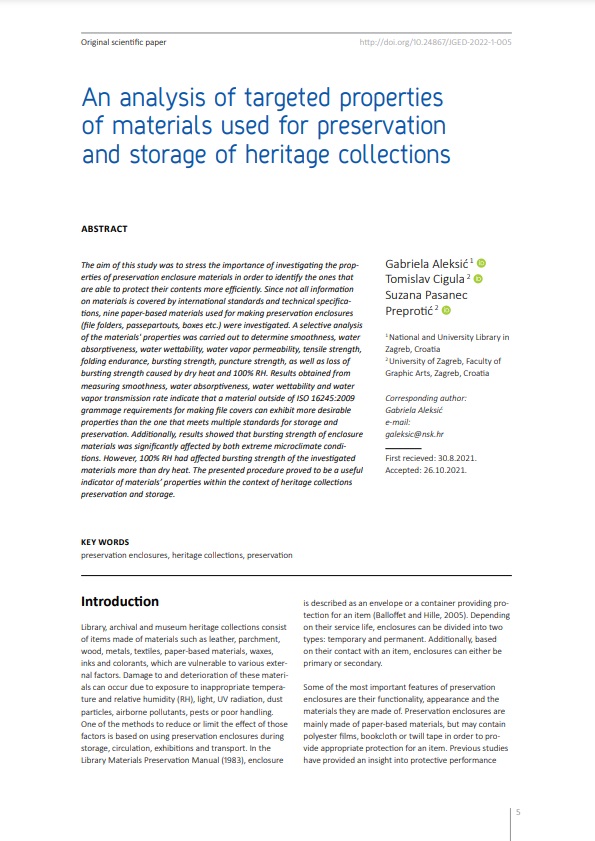An analysis of targeted properties of materials used for preservation and storage of heritage collections

Published 2022-03-01
abstract views: 65 // Full text article (PDF): 79
Keywords
- preservation enclosures,
- heritage collections,
- preservation
How to Cite
Copyright (c) 2022 © 2022 Authors. Published by the University of Novi Sad, Faculty of Technical Sciences, Department of Graphic Engineering and Design. This article is an open access article distributed under the terms and conditions of the Creative Commons Attribution license 3.0 Serbia.

This work is licensed under a Creative Commons Attribution 3.0 Unported License.
Abstract
The aim of this study was to stress the importance of investigating the properties of preservation enclosure materials in order to identify the ones that are able to protect their contents more efficiently. Since not all information on materials is covered by international standards and technical specifications, nine paper-based materials used for making preservation enclosures (file folders, passepartouts, boxes etc.) were investigated. A selective analysis of the materials' properties was carried out to determine smoothness, water absorptiveness, water wettability, water vapor permeability, tensile strength, folding endurance, bursting strength, puncture strength, as well as loss of bursting strength caused by dry heat and 100% RH. Results obtained from measuring smoothness, water absorptiveness, water wettability and water vapor transmission rate indicate that a material outside of ISO 16245:2009 grammage requirements for making file covers can exhibit more desirable properties than the one that meets multiple standards for storage and preservation. Additionally, results showed that bursting strength of enclosure materials was significantly affected by both extreme microclimate conditions. However, 100% RH had affected bursting strength of the investigated materials more than dry heat. The presented procedure proved to be a useful indicator of materials’ properties within the context of heritage collections preservation and storage.
Article history: Received (August 30, 2021); Revised (October 10, 2021); Accepted (October 26, 2021); Published online (March 1, 2022)

